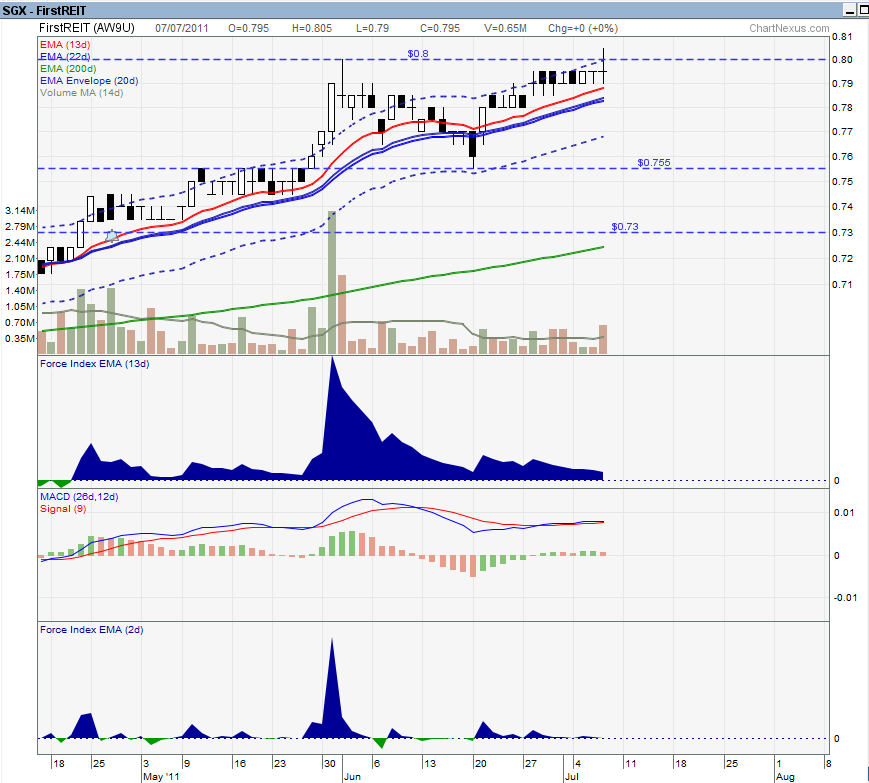These days, I haven't been really interested in finding out in detail about my personal financial statements. I mean I do record all my expenses in excel in my hp and track my cash in and out of my account but I do so out of habit and discipline. This is rather different in the past. Instead of feeling the passion and excitement whenever I tallied up the numbers at the end of the month, these days, I'm barely interested in even transferring the information in my hp to my computer. I wonder why there's this sudden disinterest in doing this...okay, maybe it isn't sudden at all. Afterall, I've been tracking it since 2008 - a total of 4 yrs - so it isn't exactly 'sudden'.
I can think of a few reasons why I'm no longer so excited about filling up my personal financial statements. I think the most important reason of all is that things don't move that fast in my life. I track my expenses every month but there isn't much changes from month to month. With the exception of a few months where I've to pay a lump sum (usually insurance payment, or some one-off items), my expenses are nearly the same. What about savings? I used to transfer any excess immediately whenever it drips into my account. However, I realised this is a waste of time, so when I have a bigger sum of money, then I'll transfer them over another account. I still remember me being so anal about meeting that monthly savings target (I broke up my yearly savings goal into monthly targets and since my income varies per month, the savings goal also varies per month) but I no longer do that. I also used to compare my monthly income with past years to see if I've been slacking but again, I no longer do that.
I stop being so obsessive about such things because I've never failed to achieve the monthly saving goals I set for myself. I may struggle over some months but I've never failed to achieve the target. So either my target are too low for me now or I'm getting comfortable with this level of 'tightness' in my belt. Or both. I stop being obsessive about meeting my monthly income targets and bench marking against my past 7 yrs of income (broken up into months) because I've never slacked. The income I get is either the same as the yr before or more. Thus, I think I've reached a level of comfort in my current level of work. Of course, I complain now and then about my harsh work schedule but overall, there's less complains about it now then before because I got used to it.
This is rather scary, even to myself. I know I'm a slavedriver and all, so working hard for extended periods of time can slowly become comfortable for me. I know I can handle that. I remember that when I started working, my hours are like 20+ hrs per week. Now? It's 40+ hrs per week, including sat and sun AND I'm getting comfortable with this?? Something needs to be done to get me out of this 'hardwork cycle'. Yes, I earn more now than before, and that's because I work longer and harder than others. That's nothing to be proud of.
It is possible to work less and earn more. I will have to believe and do it. I want to reduce my working hours to low 40 hrs per week, then 30+ and finally 20+. That would mean breaking out of my comfort zone, even though my comfort zone is actually more work. The big irony is that in order to break out of my comfort zone (which is doing more hours of work - remaining status-quo), I've to put some work now in order to reduce my working hours. Maybe then, I'll have more time to enjoy the excitement of tallying up my personal financial statements again.
I need to be challenged constantly to feel alive.
I can think of a few reasons why I'm no longer so excited about filling up my personal financial statements. I think the most important reason of all is that things don't move that fast in my life. I track my expenses every month but there isn't much changes from month to month. With the exception of a few months where I've to pay a lump sum (usually insurance payment, or some one-off items), my expenses are nearly the same. What about savings? I used to transfer any excess immediately whenever it drips into my account. However, I realised this is a waste of time, so when I have a bigger sum of money, then I'll transfer them over another account. I still remember me being so anal about meeting that monthly savings target (I broke up my yearly savings goal into monthly targets and since my income varies per month, the savings goal also varies per month) but I no longer do that. I also used to compare my monthly income with past years to see if I've been slacking but again, I no longer do that.
I stop being so obsessive about such things because I've never failed to achieve the monthly saving goals I set for myself. I may struggle over some months but I've never failed to achieve the target. So either my target are too low for me now or I'm getting comfortable with this level of 'tightness' in my belt. Or both. I stop being obsessive about meeting my monthly income targets and bench marking against my past 7 yrs of income (broken up into months) because I've never slacked. The income I get is either the same as the yr before or more. Thus, I think I've reached a level of comfort in my current level of work. Of course, I complain now and then about my harsh work schedule but overall, there's less complains about it now then before because I got used to it.
This is rather scary, even to myself. I know I'm a slavedriver and all, so working hard for extended periods of time can slowly become comfortable for me. I know I can handle that. I remember that when I started working, my hours are like 20+ hrs per week. Now? It's 40+ hrs per week, including sat and sun AND I'm getting comfortable with this?? Something needs to be done to get me out of this 'hardwork cycle'. Yes, I earn more now than before, and that's because I work longer and harder than others. That's nothing to be proud of.
It is possible to work less and earn more. I will have to believe and do it. I want to reduce my working hours to low 40 hrs per week, then 30+ and finally 20+. That would mean breaking out of my comfort zone, even though my comfort zone is actually more work. The big irony is that in order to break out of my comfort zone (which is doing more hours of work - remaining status-quo), I've to put some work now in order to reduce my working hours. Maybe then, I'll have more time to enjoy the excitement of tallying up my personal financial statements again.
I need to be challenged constantly to feel alive.















